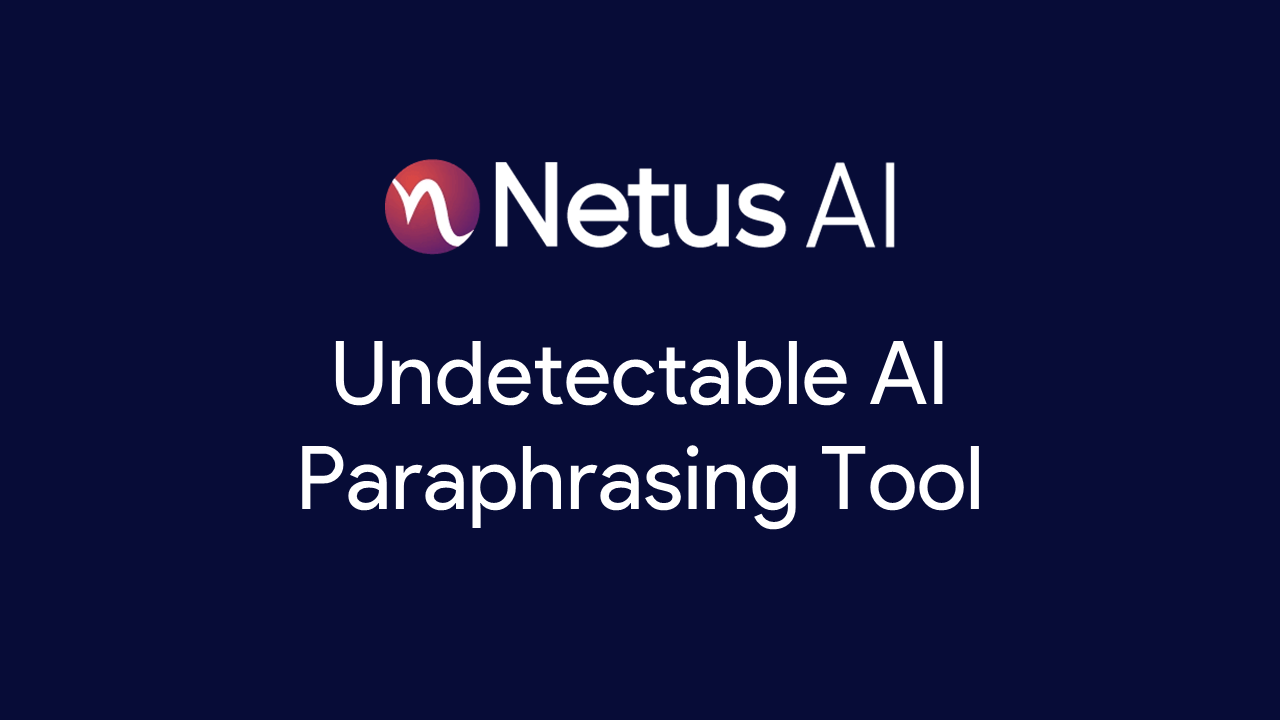NetusAI
NetusAI
Blog Article

Assessing the Effectiveness of AI Paraphrasing and Detection Tools
AI-driven paraphrasing tools like NetusAI have become vital in the world of content creation. These tools enable content creators to produce unique and high-quality content quickly by transforming AI-generated text into human-like writing. NetusAI stands out with its various features tailored to different content needs, including an AI bypasser to avoid detection and an AI detector that distinguishes between human-written and AI-generated text with high accuracy. However, the effectiveness of these tools is continually tested against advanced detection systems like GPTZero.
Understanding NetusAI's Capabilities
NetusAI is designed to serve diverse content creation purposes efficiently. Its sophisticated algorithms transform AI-generated content into text that mimics human writing closely. This capability is crucial for content creators who aim to produce original and plagiarism-free material. The tool's AI bypasser helps evade detection by AI-detection tools, while its AI detector ensures the authenticity and integrity of the produced content.
Evaluating GPTZero: Is GPTZero Accurate?
The Netus.ai blog recently reviewed the effectiveness of GPTZero, an AI detection tool that evaluates the predictability and variation in sentence structure to distinguish between human and AI-generated text. A critical question posed in the review is is GPT Zero accurate? The analysis provided insights into how GPTZero measures "perplexity" and "burstiness" to identify the nature of the text.
How GPTZero Detects AI-Generated Text
GPTZero uses sophisticated algorithms to analyze text for perplexity and burstiness. Perplexity measures how predictable the text is, with AI-generated content often being more predictable than human-written text. Burstiness, on the other hand, looks at variations in sentence structure, which are typically more varied in human writing. These two metrics help GPTZero determine whether a piece of content is human-written or AI-generated.
Accuracy of GPTZero
Despite its advanced methodology, the question remains is GPTZero accurate? The Netus.ai blog highlights that while GPTZero is effective for analyzing longer texts, it sometimes misclassifies shorter pieces. This limitation raises concerns about its reliability, especially for content creators who work with varied text lengths. The review notes that GPTZero, while primarily designed for educators, can also be useful for writers and editors. However, accuracy issues and false positives are notable drawbacks.
Practical Implications for Content Creators
For content creators, the accuracy of detection tools like GPTZero is of utmost importance. The mixed results of GPTZero, particularly its struggle with shorter texts, suggest that relying solely on this tool might not be sufficient. Content creators need to be aware of these limitations and consider using multiple detection methods to ensure their work remains original and free from AI-generated plagiarism.
Comparing GPTZero with Other Detection Tools
When evaluating AI detection tools, it's essential to compare their capabilities and accuracy. The review of GPTZero by Netus.ai provides a basis for comparison with other tools. While GPTZero excels in certain areas, its limitations highlight the need for more reliable detection options. Tools that can handle both long and short texts accurately are preferable for ensuring content authenticity.
The Role of Advanced Algorithms in Detection
Detection tools like GPTZero rely on advanced algorithms to analyze text patterns. These algorithms are designed to identify AI-generated content by examining metrics such as perplexity and burstiness. However, the effectiveness of these algorithms can vary. The inconsistencies noted in GPTZero's performance suggest that there is significant room for improvement in its algorithmic approach.
Exploring Alternatives to GPTZero
Given the mixed performance of GPTZero, it is prudent to explore other detection tools that might offer more reliable results. Content creators should consider tools that have a proven track record of accuracy across different text lengths and styles. The Netus.ai blog mentions several alternatives that may provide better performance and reliability for detecting AI-generated content.
Conclusion
The interplay between AI paraphrasing tools like NetusAI and detection systems such as GPTZero presents a complex landscape for content creators. While NetusAI offers advanced features to produce human-like writing, the effectiveness of detection tools like GPTZero in identifying such content remains variable. The review by Netus.ai raises important questions about the accuracy and reliability of GPTZero, emphasizing the need for continuous improvement in AI detection algorithms. As the field of AI-generated content evolves, so too must the tools that detect it, ensuring that content creators can produce high-quality, original work with confidence.
Report this page